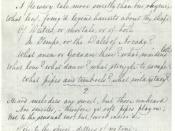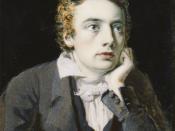Ode on a Grecian Urn and to a Nightingale
Ode on a Grecian Urn draws out two different emotions. Firstly, happiness is drawn out, mostly due to the fact that Keats uses the word happy so many times. Upon reading the poem again I find hints of sadness when examining the urn. The beginning of the poem is one of happiness and wonderment as Keats asks what men or gods are these, referring to the figures on the side of the urn. Keats seems intrigued by the beauty of the urn and how everything on the urn may fade but is forever imprinted on the side.
But when reading the poem over I see a different side of the poem. I believe that Keats is second guessing the blessing of being immortalized on the urn. The forever figures on the urn are just a tragic reminder of glorious times passed that may never be seen again.
As in lines 36-40 in which Keats states that citadels are emptied of people, streets are empty and silent and no one can ever return. Another disappointing setback of the immortality of the urn is its repetition. Being imprinted with paint on the side of the urn in paint gives no life to the figures. They are trapped in the position for all eternity with no capabilities. Who would want an immortal life with the curse of being trapped when one could life a mortal life full of free will, and choice making? Line 17 speaks of a lover who can not kiss his partner because he is stuck in position.
Ode to a Nightingale is a tough poem to read. Keats is somehow hurt by the song that gives him pleasure. Keats may be jealous of the nightingale, perhaps of the simplicity...


